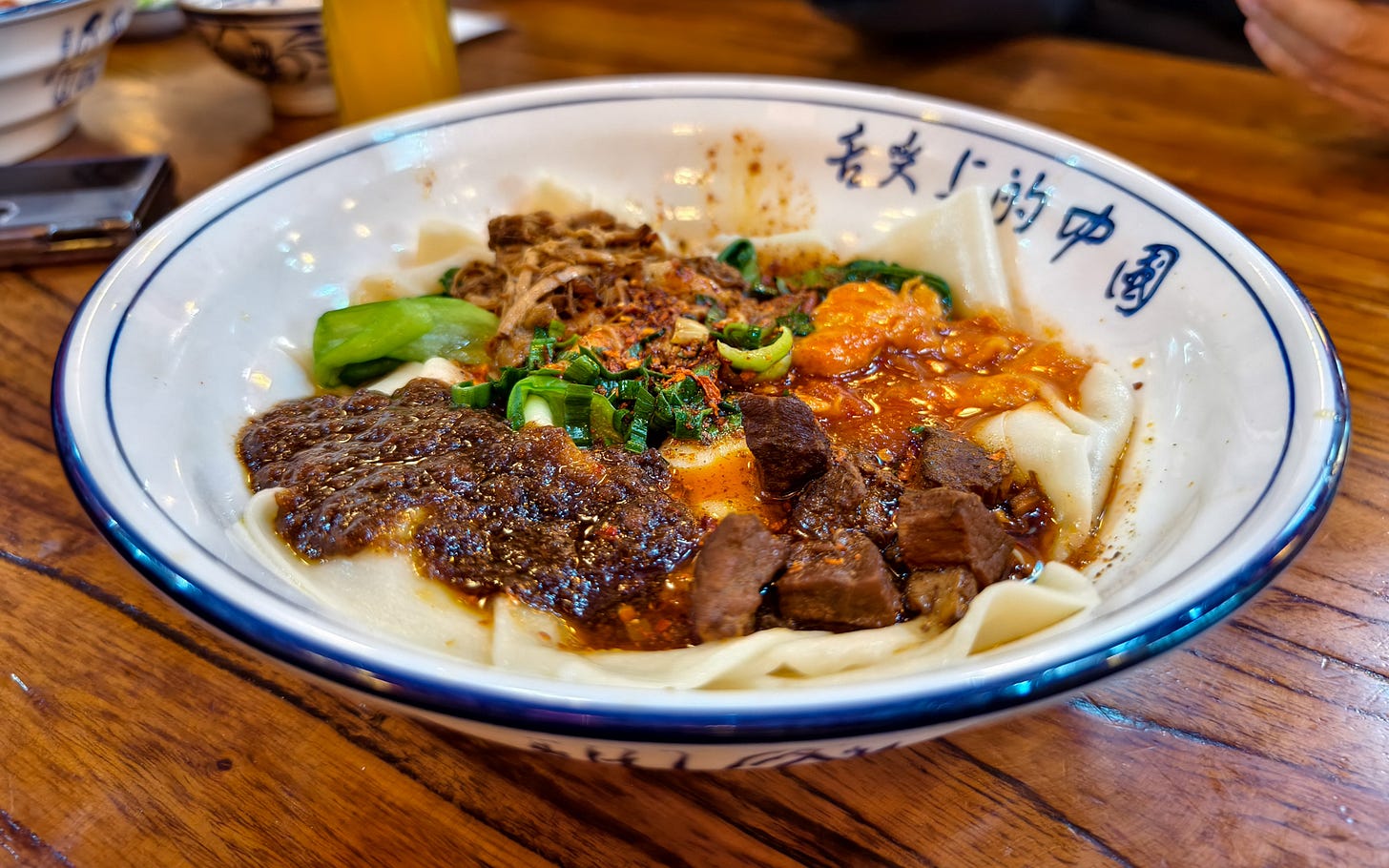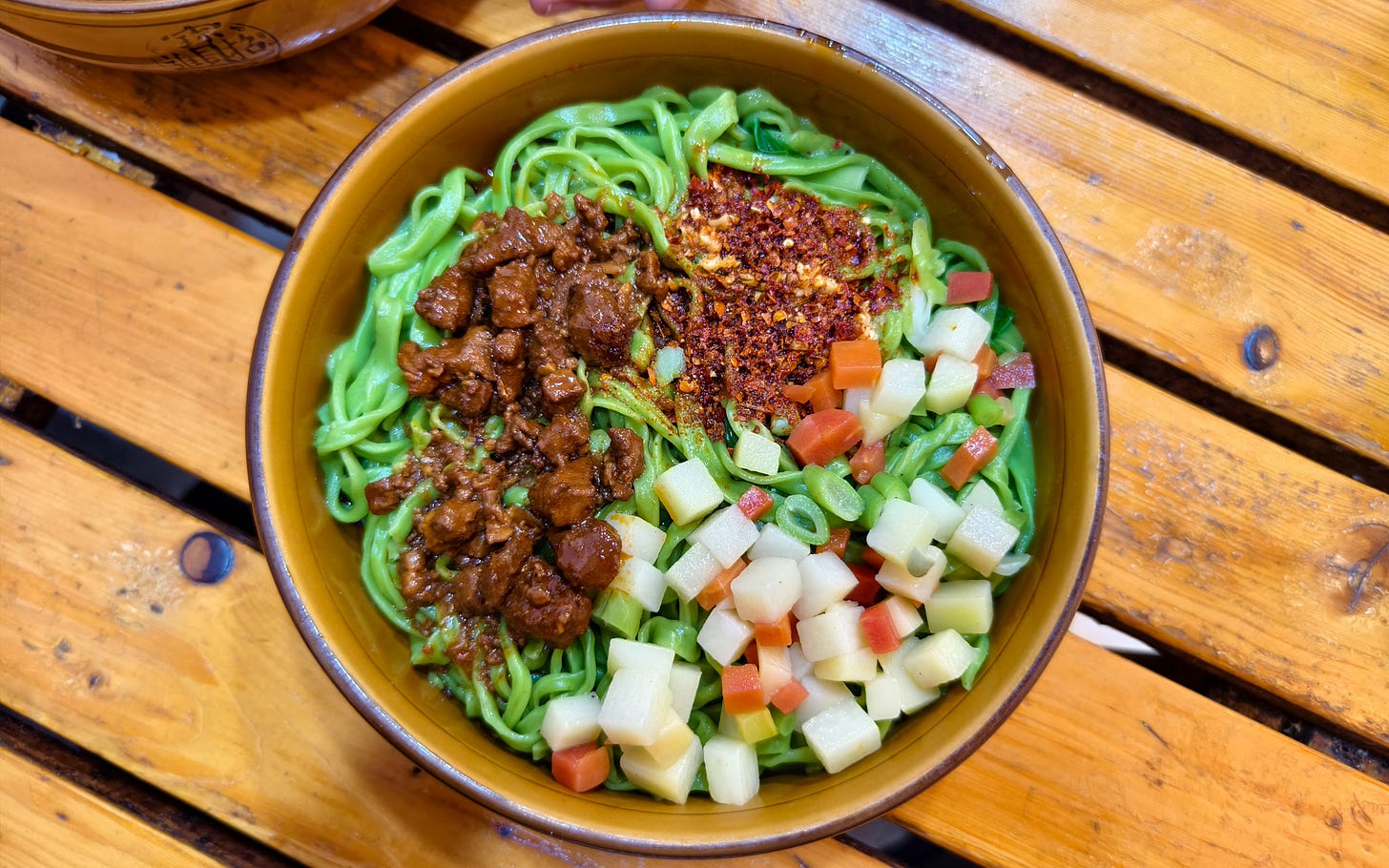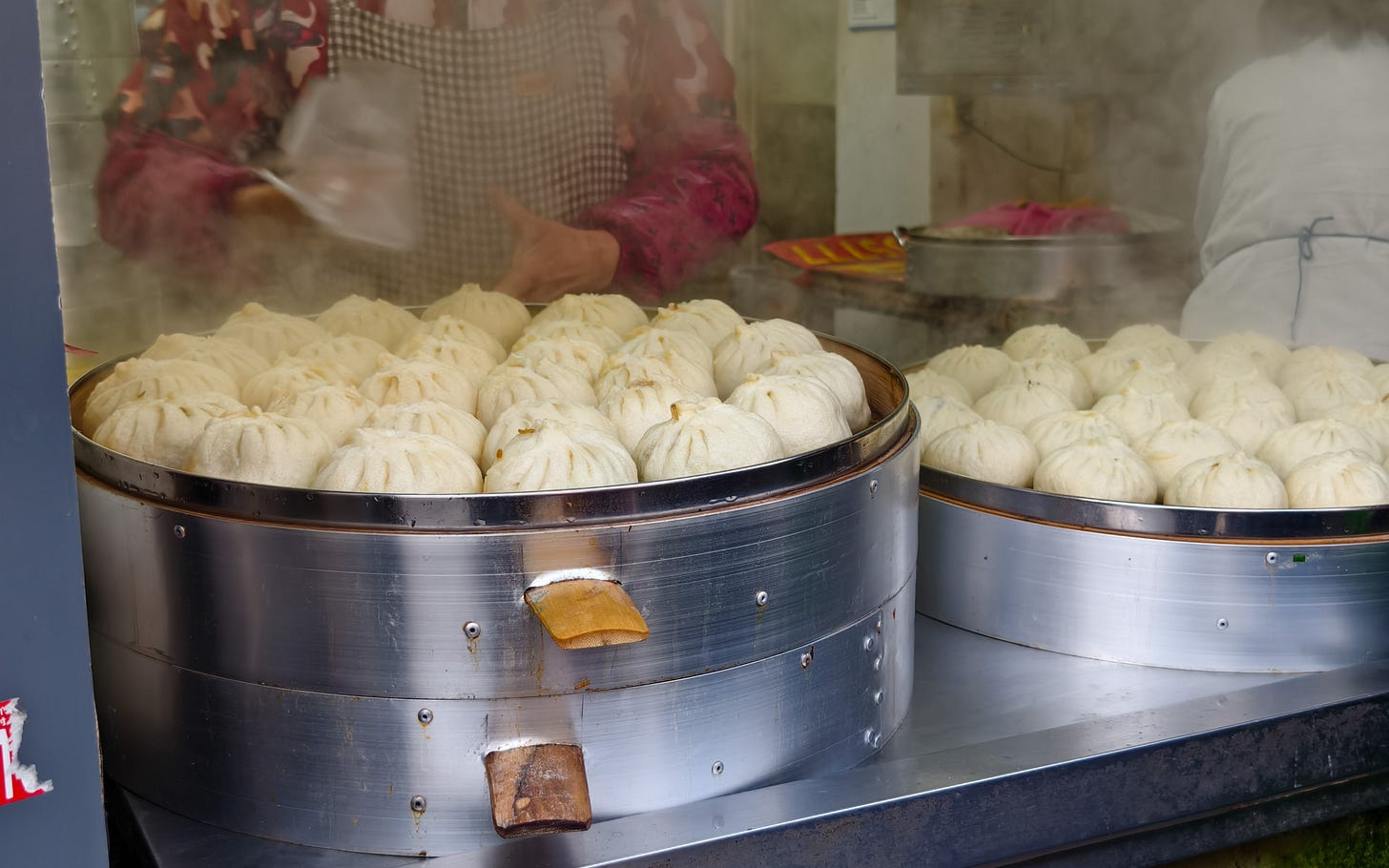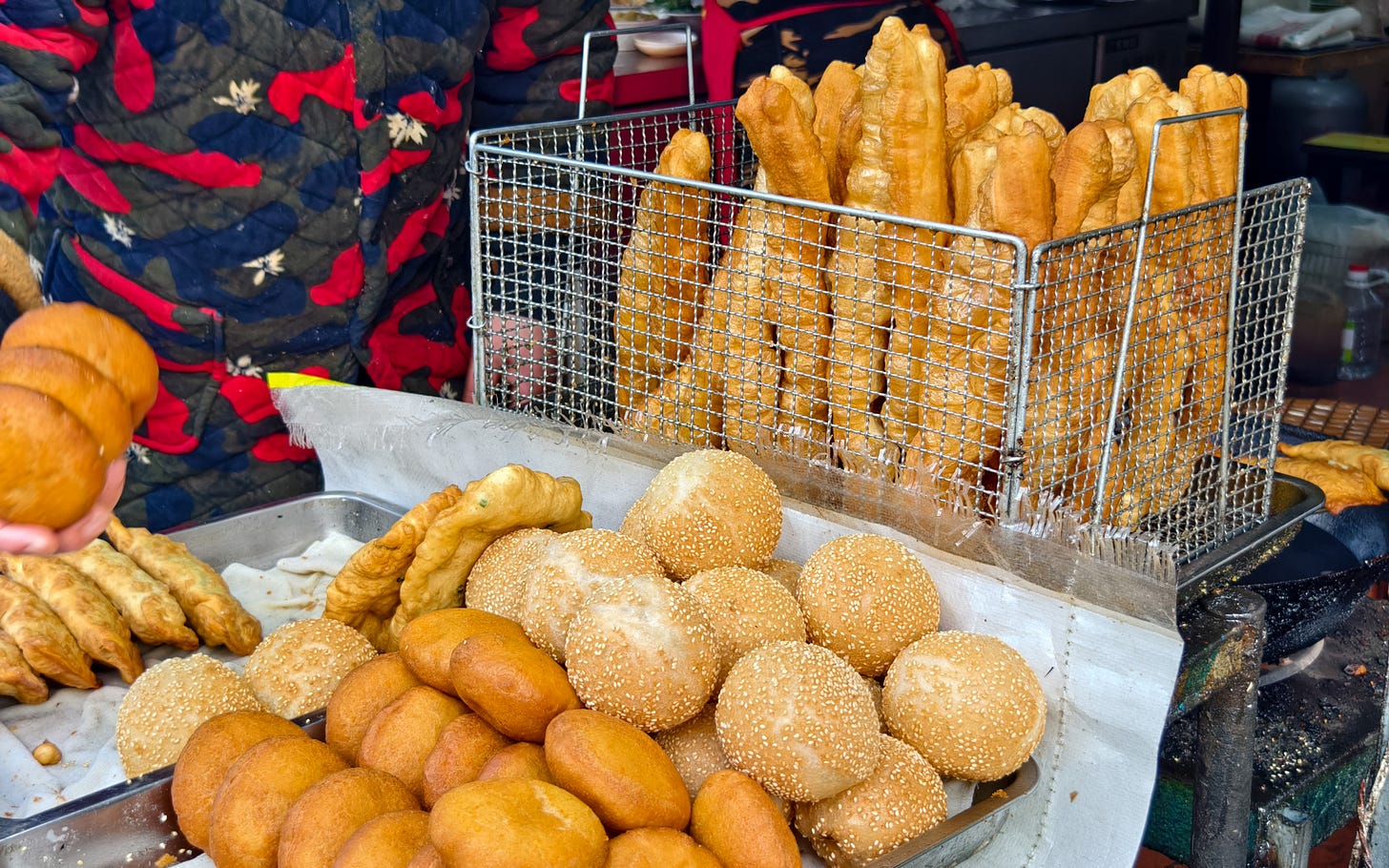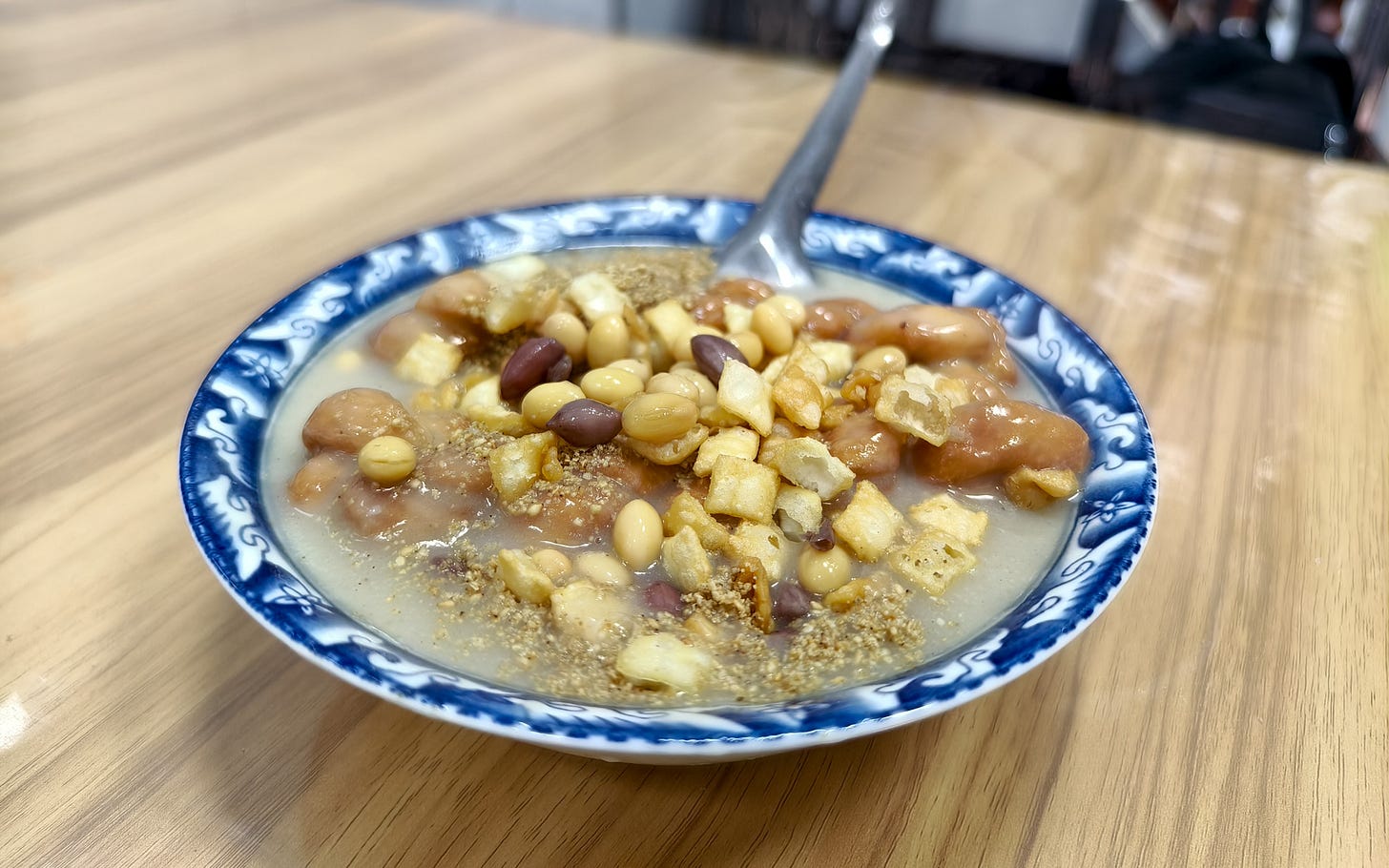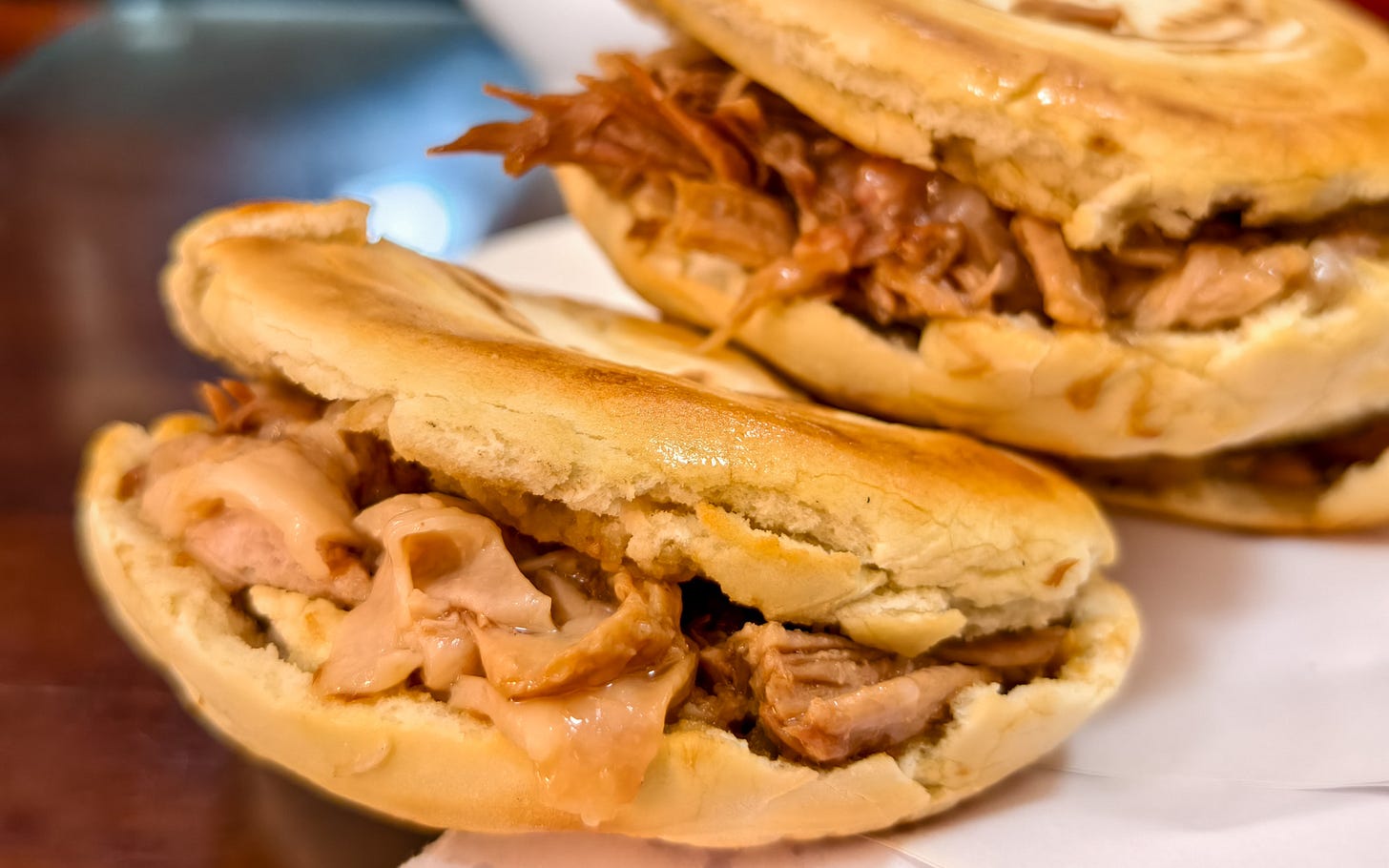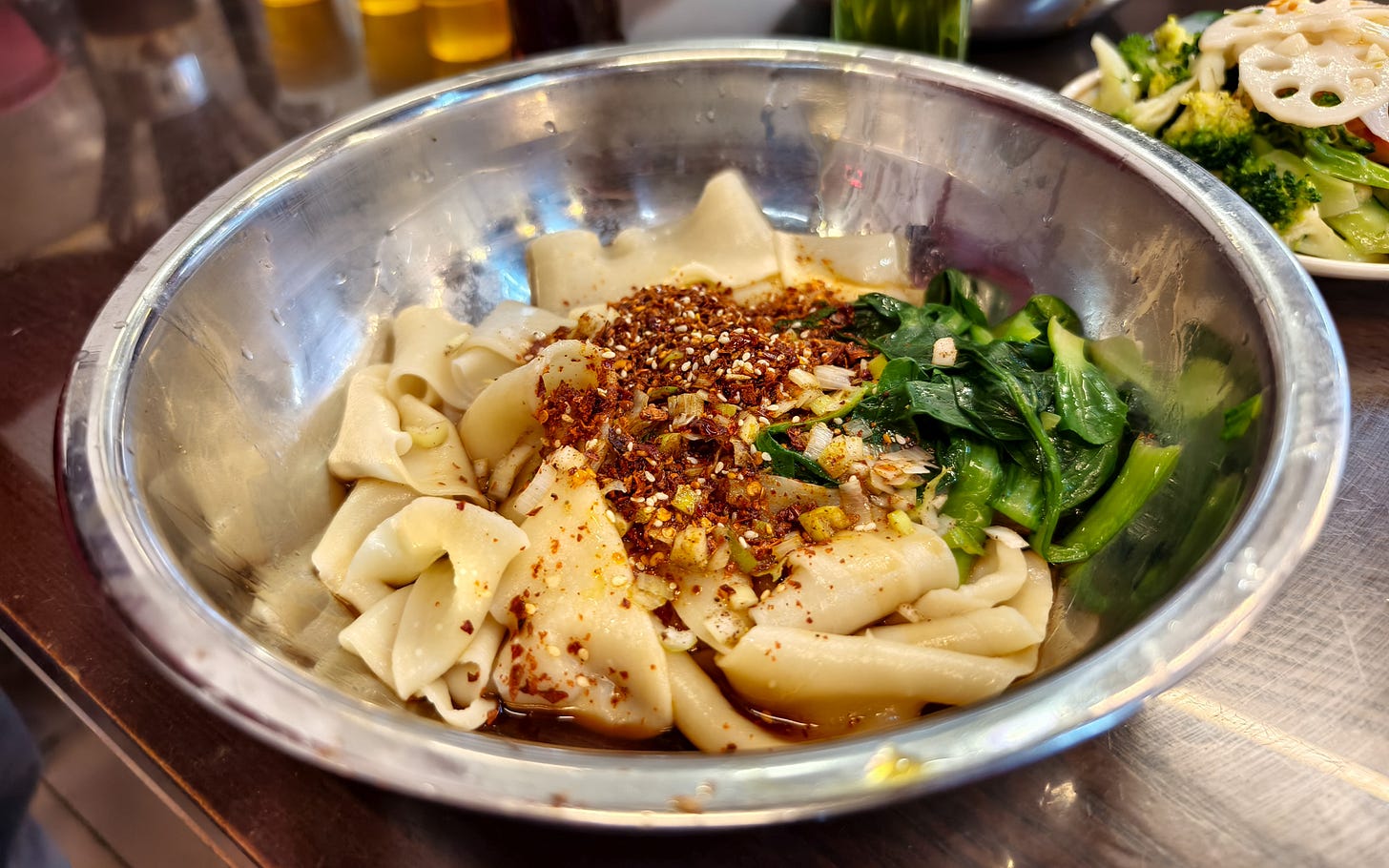Of our four stops this trip, Xi’An was mine. Macau was borne of practicality, Guangzhou Vivian’s parents’ choice, Yinchuan the obligatory hometown. But Xi’An was my request.
Not, like most of the city’s tourists, for the Terracotta Warriors, nor for the astoundingly intact ancient city walls or array of well-stocked museums. I had one thing on my mind: biang biang mian.
These hand-pulled belt noodles are named for the sound the dough makes as it’s slapped into shape, a sound in turn captured by the most complex character in the Chinese language.
More importantly for me, biang biang is the trademark dish of north London’s Xi’An Impression, a dinky little restaurant across from the Emirates Stadium that served as my first real introduction to ‘regional’ Chinese cuisine.
Like most Brits, my sense of Chinese food growing up was shaped by the takeaway, where sweet and sour chicken or noodles fried with beansprouts loomed large, dominated by Cantonese dishes tuned to a UK palate.
I heard of Xi’An Impression before I ever heard of Xi’An itself; it probably popped up on some Islington restaurant listicle I read on moving into the area. The food sounded unfamiliar, but it delivered to my flat, and biang biang’s pappardelle-esque ribbons held an immediate appeal.
I remember being amazed not only by the noodles themselves, thick strands that seemed to curl upon themselves forever, but the simple sauce, heavy with chilli and oil and not much else.
Since that first taste, I’ve ordered my way through most of Xi’An Impression’s menu (along with its former head chef’s follow-up Master Wei), from boiled dumplings at the approachable end to cold poached chicken or tripe - what felt at the time to be adventurous. I’ve explored the range of noodles and mains too, but I don’t much any more: anything that isn’t a bowl of biang biang leaves me with a tinge of regret.
And so, Xi’An’s most famous noodles were the natural choice for the first thing we ate in the city. Fresh off the train, we found the best rated spot near our hotel: what turned out to be a pretty rubbish chain restaurant. Flabby and flavourless, these were nothing like the noodles back home, and the best thing about the meal was that it introduced me to Ice Peak, a local fizzy drink whose glass bottles can be spotted in the city’s every restaurant.
This was a more visceral disappointment than our average Macau pork chop bun or drab dim sum in Guangzhou: this was the dish, the noodles that opened my horizons, that were the whole reason I’d dragged an entire family to this town. And they sucked.
I didn’t dare try again. We kept exploring Xi’An, and ate well for it, relying heavily on The Food Ranger’s write-up to guide us around, mostly sticking to the city’s Muslim quarter, where restaurants and stalls line the streets, hawking food from China’s Hui population.
Spinach noodles, lurid green and dressed with a choice of toppings, were as charmingly chewy as any I’ve eaten. A bowl of yangrou paomo, lamb broth poured over chunks of bread, where you’d be silently judged for not taking up the invite to tear the bread yourself. Or a ubiquitous type of pancake, found fried on every other street corner, rolled into a tight spiral with beef, spring onion, and Sichuan pepper, tasting uncannily like a good Cornish pasty.
We made three separate trips to a small baozi shop near our hotel, ordering a spread of the filled steamed buns to go with congee and fried youtiao from a stall across the road. On a good day these were freshly fried, gleaming with hot oil. We’d return after breakfast for the same stall’s tanggao, sticky rice cakes deep fried until they resemble a doughnut.
Not everything was a winner. A variant of these doughnuts made from mashed persimmons, found on street stalls across the city, proved strangely lacking in the fruit’s flavour; we tried four or five before we finally admitted they just didn’t live up to their promise. Then there was Fenzhengrou, a heap of beef steamed in rice flour, that had an uncanny and unwelcome resemblance to boxed Paxo stuffing.
Worst of all was a mysterious bowl of grey-ish gruel, flavoured with pepper and cumin, but topped with nuts and sweet bread sticks. An aggressive assault of the sweet and the savoury simultaneously, this was not just bad but utterly alien, a food I cannot imagine anyone actually enjoying - and yet, they must.
Perhaps afraid of more bad biang biang, I turned my focus to roujiamo - the ‘Chinese burger’ that takes second billing to belt noodles across London’s Xi’An restaurants. Available in either beef or pork, depending on whether you’re in a Muslim joint or not, this isn’t very close to a burger at all: it’s a flat bun, steamed and then pan-fried for a sear, filled with stewed meat.
Across our first two days I ordered a spread of these from different stalls to get my head round the range: some too lean, some too salty, some too bland. Most places offered the dense, puck-shaped buns I expected, but some twisted the dough into spirals that shattered into crisp shards with every bite. The good stalls chopped the meat to order, occasionally even mixing a slice or two of green chilli in to cut through the salt.
The best roujiamo I ate came on our third day, and it was also my last - I couldn’t imagine I could do better anywhere else. Located outside the Hui part of town, Qinyu’s roujiamo are packed with a mix of lean pork and dripping fat, packed into one of the flatter style buns, the dough’s density needed to soak up the juicy, wobbly meat.
The option to add extra pork proved foolhardy, throwing the sandwich out of balance and making it a salty, greasy mess - the same trap set by the McDonald’s triple cheeseburger - but the standard order was exceptional, deeply savoury without overwhelming. If China had a bigger drinking culture, this would be a pretty unbeatable 2am order.
Emboldened by finding roujiamo to beat those back home, not to mention some other excellent noodles along the way, I did eventually dare to try biang biang again, this time trusting in a recommendation for a small restaurant named Ai Hua, apparently famed for its habit of serving dishes in large metal mixing bowls.
This was more like what I’d been looking for. Springy, chewy strands of noodle tossed in a light mix of chilli, oil, and vinegar, crisp steamed greens there for a contrasting texture. The only thing this bowl had in common with my first was the bottle of Ice Peak I drank alongside it, a citrusy thread of continuity to my time in Xi’An.
Truth be told, I still prefer Xi’An Impression’s version, though that might well be a me thing. Just as they expanded my boundaries for Chinese food, perhaps they set them for biang biang, as firmly as my mum’s cooking dictated what counts as a proper Sunday roast.
There’s a flicker of disappointment in my failure to find even better biang biang, but a comfort too, if only to be able to say with some confidence that the version I eat at home holds up to the source material. Maybe there aren’t loftier heights (lengths?) for biang biang mian to reach, but that only means I’ve been spoiled by eating the best - and it’s only a delivery app away.





